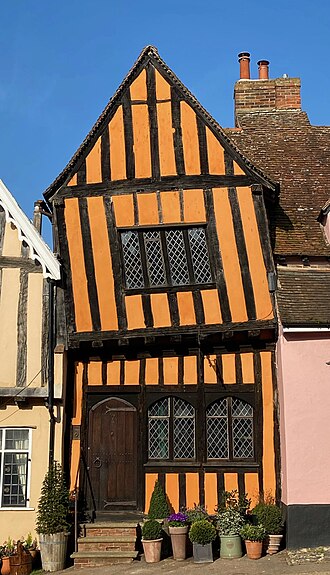“There Was a Crooked Man” is an English nursery rhyme that first appeared in print in James Orchard Halliwell’s The Nursery Rhymes of England (1842).[1]
There was a crooked man and he went a crooked mile,
He found a crooked sixpence against a crooked stile;
He bought a crooked cat, which caught a crooked mouse,
And they all liv’d together in a little crooked house.
It has been suggested that this nursery rhyme was inspired by the distorted half-timbered houses in the once prosperous wool merchant’s village of Lavenham, in Suffolk. One house in particular, The Crooked House
15th-century house in Lavenham, Suffolk, said to be the inspiration for the old English nursery rhyme "There Was a Crooked Man"., is often cited as the inspiration for the rhyme.[2]
The crooked man is reputed to be the Scottish military officer Sir Alexander Leslie (1580–1661), signatory to a covenant securing religious and political freedom for Scotland during the reign of King Charles I. The “crooked style” is said to represent the border between England and Scotland, and the “crooked house” the uneasy relationship between the English and the Scottish.[3]

